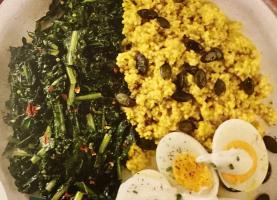Copy Link
Add to Bookmark
Report
HOMEBREW Digest #1931

This file received at Hops.Stanford.EDU 1996/01/10 PST
HOMEBREW Digest #1931 Wed 10 January 1996
FORUM ON BEER, HOMEBREWING, AND RELATED ISSUES
Rob Gardner, Digest Janitor
Contents:
Re: Chest Freezers (Sean Cox)
Believe It or Not (tm) department (Carl Etnier)
Homebrew clubs' contacts/addresses (Robert Paolino)
hydration procedure for irish moss/Weizen recipe ("Gabrielle Palmer")
re: Hops Additions and the Crabtree Effect (C.D. Pritchard)
Splitting up mash/boil into two-day event??? (Jason Meredith)
RE: Old malt- is it good? (David Pike)
RIMS (David Hill)
1st wort hopping (George J Fix)
Mash PH (John Wilkinson)
Re: burner for brew (RECKS)
need homebrewing host in NYC ("David Elm")
Open Fermentation (Tim Laatsch)
Hugh Baird uses Marris Otter? (Jim Cave)
Wyeast 3056 Starter (CASteveB)
Re: 1st batch of beer (Louis Vidal)
pectin, proteins, fruit beers (Lib)" <tmcdowel@library.bhs.org>
Using counterflow chiller (Doug Steeves)
Gravity Gradient (Paul Fisher)
Re: Hunter AirStat or other suitable controller (Richard Gardner)
Boston Beer Stock Offering (Darren Tyson)
Steeping grains (Gilad Barak)
Hi O2/Anaboolism/pH Meters (A. J. deLange)
pH meters vs test strips (pedwards)
RE: Carbon Filter and pH change (EDWARD BOCKMAN)
Oregon Brewers Fest- 96 (Joe Uknalis)
Yeast&oxygen&glucose (John Wilkinson)
Columbus Hops ("Craig Rode")
Crabtree and Schmidling (Domenick Venezia)
******************************************************************
* POLICY NOTE: Due to the incredible volume of bouncing mail,
* I am going to have to start removing addresses from the list
* that cause ongoing problems. In particular, if your mailbox
* is full or your account over quota, and this results in bounced
* mail, your address will be removed from the list after a few days.
*
* If you use a 'vacation' program, please be sure that it only
* sends a automated reply to homebrew-request *once*. If I get
* more than one, then I'll delete your address from the list.
******************************************************************
#################################################################
#
# YET ANOTHER NEW FEDERAL REGULATION: if you are UNSUBSCRIBING from the
# digest, please make sure you send your request to the same service
# provider that you sent your subscription request!!! I am now receiving
# many unsubscribe requests that do not match any address on my mailing
# list, and effective immediately I will be silently deleting such
# requests.
#
#################################################################
NOTE NEW HOMEBREW ADDRESS hpfcmgw!
Send articles for __publication_only__ to homebrew@hpfcmgw.fc.hp.com
(Articles are published in the order they are received.)
Send UNSUBSCRIBE and all other requests, ie, address change, etc.,
to homebrew-request@hpfcmgw.fc.hp.com, BUT PLEASE NOTE that if
you subscribed via the BITNET listserver (BEER-L@UA1VM.UA.EDU),
then you MUST unsubscribe the same way!
If your account is being deleted, please be courteous and unsubscribe first.
Please don't send me requests for back issues - you will be silently ignored.
For "Cat's Meow" information, send mail to lutzen@alpha.rollanet.org
ARCHIVES:
An archive of previous issues of this digest, as well as other beer
related information can be accessed via anonymous ftp at
ftp.stanford.edu. Use ftp to log in as anonymous and give your full
e-mail address as the password, look under the directory
/pub/clubs/homebrew/beer directory. AFS users can find it under
/afs/ir.stanford.edu/ftp/pub/clubs/homebrew/beer. If you do not have
ftp capability you may access the files via e-mail using the ftpmail
service at gatekeeper.dec.com. For information about this service,
send an e-mail message to ftpmail@gatekeeper.dec.com with the word
"help" (without the quotes) in the body of the message.
----------------------------------------------------------------------
Date: Sat, 6 Jan 1996 12:43:11 -0500 (EST)
From: scox@factset.com (Sean Cox)
Subject: Re: Chest Freezers
Martin Wilde <Martin_Wilde@ccm.jf.intel.com> wrote:
>I have been using a chest freezer for several years now to serve and
>lager been with. It works great, but I miss the ability that I had with
>a refrigerator to mount taps on the door. Since the sidewalls of the
>chest freezer is where the cooling cools are, I don't dare drill through
>it. I don't like cutting holes in the top of the freezer unless there
>is no other way.
>
>Has anyone tackled this problem?
I recall someone posting (a while ago, 6+ mo I think) how they had
put a 2x6 "collar" around their chest freezer to drill for taps. Basically,
they removed the door from the top of the freezer, and attached this collar
(I don't quite recall how, probably to the screw holes for the door hinges)
then attached the freezer door to the top of the collar.
Cheezy ASCII drawing alert!
Top Door -> DDDDDDDDDDDDDDDDDDDDDDDDDDDDDDDD
C C
Collar -> C Drill for taps here C
C C
Freezer -> FFFFFFFFFFFFFFFFFFFFFFFFFFFFFFFF
F F
F F
The author made mention of the 2x6's being satisfactory insulation, but I
would expect it to be trivial to add some foam lining to the collar just in
case.
Note: I haven't done this myself, I'm just repeating what I read (although
when I have room for a chest freezer, I plan to try it!). You should
probably search the archives (and use common sense :) to double check this.
--Sean
_______________________________________________________
Sean Cox, Systems Engineer FactSet Research Systems
scox@factset.com Greenwich, CT
------------------------------
Date: Sat, 6 Jan 1996 20:32:40 +0100 (MET)
From: Carl Etnier <Carl.Etnier@abc.se>
Subject: Believe It or Not (tm) department
I'm back in the north after celebrating the Christmas holidays with
my family in Bavaria, where I met a German who needs a few things
explained to him.
The background:
We stayed in Garmisch-Partenkirchen, skiing and enjoying Bavarian and
other south-German brews. A Doppelbock by Henninger was a
particularly malty, almost chewable treat that graced our glasses
several nights.
In this merged town, the U.S. military has both barracks and a couple
vacation hotels for troops, etc. There is, consequently, a small PX
(military shopping center, for you non-U.S. folks on the list) in
Partenkirchen. The goods and the prices reflect very closely what is
available stateside, and one pays in dollars. The PXs exist in some
sort of gray zone between the U.S. and the host country, and so are
not open to just anybody. You need a military I.D. or to be in the
immediate family of someone with a military I.D. to get in.
The story:
One day there was a knock on the door of our Ferienwohnung, and a
dishevelled German man in his 30s came through the door, preceded by
his cat. He introduced himself as the landlord's son, recently
returned from the U.S. He had us pegged as U.S. citizens, with
probable PX privileges.
Turns out the guy had become enamored of U.S. beer during his stay
there, and wanted us to buy him a case or two of it at the PX. Not
just any beer, but Budweiser. No, this was not a mix-up of A-B with
Budovar. Closer (and incredulous) questioning revealed that it was
not ordinary Budweiser he was after, but his beloved Budweiser Ice!
Go figure.
I didn't have the presence of mind to ask him his opinion of sexual
encounters in canoes, but I would have refused him the beer on the
grounds of not wanting to contribute to the delinquency of an adult.
It's my father who holds the PX ID card, so I turned this muddled man
over to him. Dad refused because it is illegal to make such purchases
for people without PX privileges.
My parents saw him again when they checked out. He claimed to have
found other U.S. citizens to get him the Bud Ice, to his great
relief. "German beer," he explained, "gives me a stomach ache."
******
Thanks to all who gave me your thoughts on whether my beer will be
ruined, er, freeze, in the move through a Scandinavian winter. Most
were optimistic, if I insulate it with blankets, etc. I have managed
to change out the flatbed for a van with an unheated but fully
enclosed cargo area. The big move is on Monday (Jan 8).
Carl Etnier
A transplanted Yank (still) in Trosa, Sweden
Centimeters of ice on the Baltic outside my house: 15
------------------------------
Date: Mon, 8 Jan 1996 13:13:36 -0600 (CST)
From: Robert Paolino <rpaolino@execpc.com>
Subject: Homebrew clubs' contacts/addresses
Are you affiliated with one of the clubs listed below? If so, send me your
_current_ mailing address so we can update our mailing labels.
Bidal Society of Kenosha (Wiscowsin)
Focal Point Homebrew Club (Wiscowsin)
Respected Ale and Lager (Nebraska)
Forest City Brewers (Illinois)
Rapscallions of Wichita (Kansas)
One Brew over the Cuckoo's Nest (Colorado)
- - - - -
We (Madison Homebrewers and Tasters Guild) send newsletters on a _regular_
basis to clubs with which we maintain a newsletter exchange. We send to a
somewhat random and changing selection of other clubs outside that
exchange; you may get it one month and not another depending on the whim of
the person affixing the mailing labels. (The total number mailed remains
about the same, but we rotate the "other" clubs on a nonsystematic basis.)
After each month's newsletter mailing, we get a number of returned
newsletters sent to clubs and individuals for reasons such as changed
addresses, with or without forwarding addresses. These cost us the return
postage due or address correction fees. (Even though they're sent bulk
mail at 22.6 cents each, we have to pay full first class postage as postage
due when they're returned, so they end up costing us 54.6 or 72.6 cents in
postage for something never delivered, not to mention the printing cost for
the newsletter itself.)
In the case of homebrew clubs, we know that many of the addresses are
personal home addresses of a member, but when that person moves the
newsletter follows him (or gets returned to us) and never makes it to the
current club contact. I'm not writing to bitch about postage due (of
course, we'd still rather not pay it), but instead to be certain that when
we send a newsletter, it gets to it intended recipient.
If you receive our newsletter, please advise us if your club contact
changes (or has recently changed) so we can keep sending them to you. If
you receive it and don't want it, let us know. If we're on _your_ mailing
list and we haven't reciprocated (we make mistakes), let us know. And
while you're letting us know, let other clubs and the AHA know, too, as a
courtesy to them.
Thanks.
Now go have a beer,
Bob Paolino uswlsrap@ibmmail.com
Madison rpaolino@earth.execpc.com
Winner of the 1995 Great Dane Challenge
Look for that 50IBU dry-hopped pale ale at the
Great Dane--on beer engine--in early February 1996!
Columbus was a Hophead!
------------------------------
Date: Mon, 08 Jan 1996 14:26:11 EST
From: "Gabrielle Palmer" <gabriellepalmer@e-mail.com>
Subject: hydration procedure for irish moss/Weizen recipe
Hello to the HBD Collective!
I was wondering if someone could please post the hydration procedure for irish
moss. What are the benefits of doing this?
I have a recipe that I would like some comments on. What do you think:
WEIZEN HEIMER
Ingredients:
6.6# Wheat LME
1#crystal malt 40L (cracked)
1#honey
1-1/2 oz. Cascades or Hallertauer hops (60 minute boil)
1/2 oz. Cascades or Hallertauer hops (15 minute finish)
1 pkg. Wyeast 3068 Wheinstephen Wheat Yeast
Irish Moss (clarifying)
honey or DME (priming)
Primary ferment: 3-5 days
Secondary ferment: 5-8 days
So, what do you think? Which hops would you recommend? Any changes?
TIA for all your expertise! I have found that this forum has greatly
improved my beer-making abilities. Thanks again.
Gabrielle Palmer
Die Design Standards
Phone: (313)59-42107 PROFS ID: GPALMER6
Fax: (313)32-24359 internet: gabriellepalmer@e-mail.com
------------------------------
Date: Mon, 8 Jan 96 14:55 EST
From: cdp@chattanooga.net (C.D. Pritchard)
Subject: re: Hops Additions and the Crabtree Effect
arf@mcs.com (Jack Schmidling) posted in #1929:
>The most recent batch was finished by adding one oz of Saaz along
>with the quart of water that it had been steeped in after primary
>fermentation. The water was brought to a boil, hops added, heat
>turned off and allowed to steep for 10 min. This was added to the
>beer after the first week of fermentation. It sat on this for ten
>days, at which point the beer was clear and it was transferred to
>a keg and carbonated.
I like and use something similiar to Jack's method because the hops are
sanitized a bit and I add boiled and cooled water anyway to top off the
secondary- usually 1/2 gal. or less. Here's my data point:
I make tea type hop bags by sandwiching loose Cascades hops between 2 paper
coffee filters and stitching the fliter edges closed on a sewing machine.
The bags swell and the paper softens when you put them into boiling water,
so don't pack them too full- I put a bit less than 1/4 oz in each bag. I
pitch the bags into boiling water, remove heat about a minute after boiling
resumes, put plastic wrap *loosely* over the open top of the pot and put the
pot in a cold tap water bath in the sink. It helps if the pot is almost
full- the plastic wrap is less likely to bust as it's sucked downward toward
(and sometimes into) the tea. It takes 1/2 gal or so of tea about 45-60
mins to cool to about room temp.- acts as a steep. I pour the tea slowly
from the pot into the brew in the secondary but, I purge the secondary with
co2 before racking from the primary. If you're concerned about oxidation or
don't purge/co2, a slow siphon should work. I use 2 bags (a tad under 1/2
oz.) in ales and like the results- YMMV.
I haven't tried my method with a lager yet but, it'd probably be wise to
drop the tea temp. to about the temp. of the brew so as not to shock the yeast.
I pondered using our automatic coffee maker to make the tea but didn't want
to risk my wife finding a hop aroma or taste in her subsequent morning
coffee. If you've a spare coffee maker (or only one coffee maker and a wife
that's not a red-head or has no smell or taste), it might be worth a try.
I'd be interested in the results if anyone tries this!
- ----
I find the postings on the Crabtree effect very educational and hope the
thread is continued; however, after:
>...it's pyruvate or maybe pyruvate phosphate), it is fed into the
>Krebs/TCA/Citric Acid cycle...
and
>In the presence of glucose (above about 0.5%) S.cerevisiae obtains energy
>through substrate-level phosphorylation, via the EMP pathway (glycolysis
>and fermentation)...
My head hurts and I'm in great need of a homebrew! <G>
Keep on posting guys- I figure no pain, no gain!
C.D. Pritchard cdp@chattanooga.net
------------------------------
Date: Mon, 8 Jan 96 12:35:14 -0800
From: Jason Meredith <jason.meredith@attws.com>
Subject: Splitting up mash/boil into two-day event???
Since I have started all-grain brewing I can no longer produce homebrew
as often as I would like due to the length of my brew days. Can anyone
think of a reason why I couldn't split my brewing day in two and mash one
evening and boil the next? What (if any) are the risks of leaving
pre-boiled wort standing overnight? Would this affect the quality of the
final brew? Has anyone else used or tried this method? I would be
collecting the mash run-off in a 6.8 gal carboy and storing it until the
next evening when I would transfer it to my 15 gal brew kettle.
TIA,
-jason
------------------------------
Date: Mon, 8 Jan 1996 13:00:13 -0800
From: David Pike <davep@bdc.cirrus.com>
Subject: RE: Old malt- is it good?
I just received approx. 100 pounds of De-Wolf Cosyns Malt(various flavors)
that is at least 2 years old, but probably more like three. It was bought the
first summer it made it into the homebrew market here is the U.S.
Is it still good for brewing? What should I look for in terms of smell, taste,
etc. that would indicate it is bad, or still good? Any thoughts would be
appreciated.
Dave Pike
------------------------------
Date: Tue, 9 Jan 1996 08:27:55 +1100 (EST)
From: davidh@melbpc.org.au (David Hill)
Subject: RIMS
My brew mate and I are considering recirculating the mash through a copper coin
immersed in our sparge water heater.
The idea is to keep the sparge water at near boiling and recirculate the
mash liquor through it as required to elevate the mash temp.
Can anyone see any obvious flaws in this idea.?
Would it take too long to transfer sufficient heat?
Wild guesses at diameter and length of copper needed to be immersed in the
hot water to achieve adequate heat transfer would be appreciated.
We typicaly mash 9 - 11 Kg grain to make 60 lit brews.
Mash tun is 35 lit
Sparge water vessel is also 35 lit.
Many thanks
David Hill :-)>
David Hill :-)>
------------------------------
Date: Mon, 8 Jan 96 15:45:40 -0600
From: gjfix@utamat.uta.edu (George J Fix)
Subject: 1st wort hopping
I hope it was clear in my original post that the Brauwelt study
was done only for German styled Pilsner beer. Nevertheless, the
following points derived from this study are IMHO fundamental and
apply to beer in general.
(i) Late kettle hopping will lead to much higher iso-co-humulone
fractions than other hopping procedures. This means that
aromatic considerations aside, late kettle hopping will
increase the harshness of beer's hop taste. This effect
will be just as relevant for low co-humulone aroma hops
as it is for other types. ( This result can also be
predicted from theoretical considerations given the
differences in polarity of the humulone analogs).
(ii) DeClerck's finding that "... beer will always retain the smell
of hops... (no matter when they are added)..." is valid. See
the section on hop additions in DeClerck's book (Vol.1) for
more detail. I am still trying to locate Vol.2 of Hind's classic
work, but if I understand Jeff Frane's comments, the findings
in this reference do not contradict these results. The
chrotomagraphs displayed in the Brauwelt article showed many
hop oil constituents (alcohols like linlool as well as
various transformed hydrocarbons) at or above their flavor
threshold in the beers made with 1st wort hopping. In the
professional tasting panel both intensity and quality of
the relevant tones were rated. There were only minimal
differences in the intensity ratings of the different
hopping procedures, but major differences in the quality
ratings. This tasting was done blind, and each panel member
had to pass a triangle test in order to have their ratings
included in the total. (How I wish such a procedure could be
incorporated into amateur competitions!)
(iii) A corollary I draw from (ii) is that the character of hop
aroma in beer is best controlled by the type and amount of hops
used.
(iv) The Brauwelt study did not consider of the option of dry hopping.
However, there have been several other studies which have
compared late kettle hopping and dry hopping. (See e.g. reference
21 in Chapter A of my book on brewing science). In every such
study I have seen dry hopping wins by a wide margin.
First wort hopping has higher utilization rates. E.g., the Pilsner in the
Brauwelt study normally had IBUs in the mid 30s, and this increased to the
low 40s with 1st wort hopping. Also 1st wort hopping has been seen as a "Pilsner
procedure", however I have been having fun playing around with variants of
it for other lager styles (as if any of us needed an excuse for brewing more
beer!) For most ales I suspect the traditional English practice of middle
kettle hopping with dry hopping will remain the preferred option.
George Fix
------------------------------
Date: Mon, 8 Jan 1996 16:04:07 -0600
From: John Wilkinson <jwilkins@imtn.tpd.dsccc.com>
Subject: Mash PH
I have seen a number of references to mash ph and sparge water ph
concerning keeping the ph low enough, but I have a different problem.
My water is very soft (according to hardness test strips from Williams)
and low ph (6.0 according to my digital ph tester). I suppose I can
raise the ph with calcium carbonate but that adds hardness. Is that
a problem when making pilsners? I have just made ale so far but plan
to make some pilsners soon. Also, does the low ph affect my ale mash?
What little I have seen about low ph indicates it could result in a higher
ratio of fermentables to nonfermentables and my beers do seem to lack
some body, although I have done only a few partial and a couple all grain
brews.
Any advice would be much appreciated.
TIA,
John Wilkinson Grapevine/Plano/Palestine, Texas
------------------------------
Date: Mon, 8 Jan 1996 14:06:26 -0800
From: RECKS@eworld.com
Subject: Re: burner for brew
what are my options for burners in my ten gallon brewery i am currently
setting up in my basement. it obvioussly needs to be powerful, but
controlable. my concern is with carbon monoxide.
thanks roger eckes.
------------------------------
Date: Mon, 8 Jan 1996 16:08:28 -0500 (EST)
From: "David Elm" <delm@hookup.net>
Subject: need homebrewing host in NYC
My son, the student actor, is now living in Manhattan at 78th and
West Broadway and is seeking an all grain brewer that will host him for
the occasional brew of my Belgian lite (5.9%). If you could do this please
contact David Elm at delm@hookup.net Thank you
------------------------------
Date: Mon, 08 Jan 1996 18:30:21 -0500 (EST)
From: Tim Laatsch <LAATSCH@kbs.msu.edu>
Subject: Open Fermentation
Hello All,
I would like to begin experimenting with open fermentation and would like to
hear from those of you who do it routinely. The mystique of open
fermentation is a little intimidating and I would like to arm myself with
some knowledge prior to jumping headlong into this. I've read Jim Busch's
excellent treatise on open fermentation on "The Brewery" web site, but still
have a few questions.
What exactly defines "open" fermentation? Is it still considered "open" if I
place the lid loosely on the fermenter? (Yes, according to Jim B.) What
about covering with saran wrap like some micros do---Bell's, e.g.? I assume
that the "open" period should begin as soon as a krauesen layer covers the
surface of the fermenting beer and should last until the foam begins to
subside and break apart. Any dissention yet?
Some of the true British-style open fermentations I've seen (in pictures) use
a recirculating system, in which fermenting beer from the bottom of the
fermenter is redistributed to the top of the fermenter (spraying or stream).
What is the purpose of recirculation: rousing, aeration, mixing, all of the
above? Any others? Wouldn't increased aeration lead to greatly elevated
diacetyl production? Is recirculation necessary to get the true benefits of
open fermentation? For that matter, what exactly *are* the benefits of open
fermentation? How long does the recirculation period generally
last---until the rocky head subsides? What is the pumping rate? Does
"dropping" the beer have a similar effect or serve as a substitute for
recirculation? How could recirculation be accomplished in the home setting?
My thoughts are to use some sort of small submersible pump like the kind used
in aquariums. Good or bad idea? Any alternatives?
TOO MANY QUESTIONS?!?!? I definitely need some help. I most likely will use
my 10-gal Volrath ss stockpot as triple duty mash-tun, kettle, and open-top
fermenter. My plan is to loosely cover the fermenter until fermentation
commences, then remove the lid and begin recirculation until fermentation
basically subsides, then rack to glass secondary or straight-away to keg.
Opinions are welcome. Let's demystify this approach! Maybe this will draw
some British brewers out of Lurkerdom. And what about top-cropping.... ;-)
Don't worry, I'll shut up...for now.
Tim
************************************************************************
| Timothy P. Laatsch | laatsch@kbs.msu.edu |
| Microbial Ecology Grad | Head Brewer, Spruce Grove Nanobrewery |
| Michigan State Univ/KBS | Check out my homebrewing page on the Web! |
| Kalamazoo, MI | http://kbs.msu.edu/~laatsch/beerhome.html |
*************************************************************************
------------------------------
Date: Fri, 5 Jan 1996 19:32:52 -0800 (PST)
From: Jim Cave <CAVE@PSC.ORG>
Subject: Hugh Baird uses Marris Otter?
I was looking at the spec sheet from Hugh Baird today and noted
that I looks like they are using Marris Otter as their barley for malting.
Either that, or they are using a variety that has Marris Otter parentage.
They had supplied a spec sheet with a kind of evolutionary diagram of the
malt, ending in Marris Otter.
Can anyone comment on this? George Fix? Jim Busch?
Cheers, Jim Cave
------------------------------
Date: Fri, 5 Jan 1996 23:39:31 -0500
From: CASteveB@aol.com
Subject: Wyeast 3056 Starter
Greetings,
I am very new to homebrewing (only one batch made from a kit uder my belt,
just bottled) and need some advice about yeast starters.
I am going to make a wheat beer soon and need to know how important it is to
make a starter for my yeast. And, if it is important (which I suspect it is
to get the best results possible), how do I do it? I have read a little
about it and would like a little "practicle" advise. Also, what type of
container to I use? (will a 22 oz bottle work?)
I will be using 6 lbs DME that is about 60% barley / 40% wheat malt. 1 oz
Hallertaur boiling/ 1/2 finishing. Wyeast 3056 Bavarian Wheat.
Also consindering adding some apricot extract about 1/2 way through bottling.
(So I can have both with and without)
Your advice is greatly appreciated.
Steve Burrow
------------------------------
Date: Fri, 05 Jan 1996 22:51:15 -0600
From: Louis Vidal <lavidal@win.bright.net>
Subject: Re: 1st batch of beer
Welcome to the wonderfull world of homebrewing Larry. Before you
brew that kit, go to your local homebrew supply shop and pick up a copy
of "The Complete New Joy of Homebrewing" by Charlie Papazian. Read the
section titled "Especially for the beginner". It is a good,
no-nonesense introduction to homebrewing. I purchased the book before I
brewed my first batch of beer and found that Charlie's instructions were
much better than the ones that came with my kit.
Good Luck and good brewing,
Louie Vidal
------------------------------
Date: Mon, 08 Jan 96 15:51:00 PST
From: "McDowell, Thomas Y. III (Lib)" <tmcdowel@library.bhs.org>
Subject: pectin, proteins, fruit beers
Mike Uchima (uchima@fnal.gov) writes :
>"I'm a bit unclear on whether high temperatures actually extract the pectin,
>or just *set* it."
As some of you may or may not know, pectin is a protein. As it was
explained to me, high temperatures denature proteins (at temperatures that
are specific to the particular protein). The structure of a protein can be
described on several different levels, primary (amino acid sequence),
secondary (alpha helix or beta pleated sheets), tertiary (the way a protein
folds on itself), and quaternary (the way groups of proteins fit together).
When we speak of pectin being set, we are referring to whether or not it will
absorb light (making the beer cloudy). Pectin does not absorb light unless it
has been denatured. As I'm sure we all know, temperatures required for
boiliing will set (or denature if you wish) the pectin yielding a cloudiness
that is sometimes percieved as undesirable by some brewers. I have brewed a
great many fruit-beers (they are my passion) using a variety of techniques.
Whenever I've used whole fruit, I have steeped the fruit in the kettle at
temperatures between 155oF and 162oF for about 30 minutes. Call me a
fanatic, but in order to extract as much flavor as possible, I always try to
leave the fruit in the primary. This has become a bit of a problem over the
last couple of years since I have changed over to an all grain system. I
brew 10 gal. batches using a 1/2 barrell with the top cut off as my brew
kettle. I am having a bit of trouble getting my fruit into the primary w/out
bringing the trub along. It was a lot easier when I was making extract beers
in a five gallon ss pot. I could just dump the whole mess (wort & fruit)
into the primary. The size of the keg and weight of 10 gallons of wort have
made this method impossible. I have resorted to scooping the fruit out of the
kettle with a sanitized ladel before pumping my wort off via an outlet I had
saudered onto the bottom of the side of the keg. Ladeling the fruit makes
for a bit of a messy process, but my beers have mostly turned out very well.
As for clarity, I have only achieved this through very patient waiting.
I have brewed with raspberries, black raspberries (my favorite), apples,
blueberries, cherries, choke cherries, and strawberries. My best examples
are my strawberry wheat ale, and my apple mead. The strawberry wheat was
clear within 3 1/2 months of bottling (though it sat in the secondary for
about 3 months). The apple mead was clear after about 1 1/2 months in the
secondary, but sat for much longer in order to age the mead. The other beers
were not applicable because they were not wheat beers or in the case of the
blackraspberry wheat ale where the beer was purple.
If anyone has anything to add, correct, etc. which might help me, or
anyone else, I'd be greatly appreciative. Or, how about a gadget that would
hold the fruit (sometimes small and particulate like in the case of
black/raspberries) together while steeping and still allow them to be removed
(as a single unit) to be placed (loose if possible) into the primary. Any
ideas can be sent directly to me at tmcdowel@library.bhs.org, or posted to
the homebrew digest for all to see.
Thanks for reading this far.
Keep brewing,
Tym McDowell, III
------------------------------
Date: Tue, 9 Jan 1996 00:01:01 -0400
From: Doug Steeves <aa702@ccn.cs.dal.ca>
Subject: Using counterflow chiller
For Christmas, I asked for the materials required to make an immersion
wort chiller, but my Mom in her exuberance got me a counter-flow chiller.
(So what did your Mom get you for Christmas :-) ) Because I will now be
syphoning my wort, I have a couple of questions about procedure..
1. I had been just tossing broken up hop plugs into the wort for the boil.
Should I be containing the hops somehow to prevent them from clogging up the
chiller?
2. Can my plastic racking cane and tubing withstand the hot wort
temperatures or do I need to fashion something out of metal? The chiller
was equiped with hoses for the water intake and outtake, but nothing for
feeding the wort into it.
TIA.
- --------------------------------------------------------
Doug Steeves Meteorologist by day
Chebucto Community Net
Halifax, Nova Scotia, Canada Home Brewer by night
aa702@ccn.cs.dal.ca
_________________________________________________________
------------------------------
Date: Mon, 8 Jan 96 23:00:14 EST
From: Paul Fisher <fisher@ltpmail.gsfc.nasa.gov>
Subject: Gravity Gradient
As a very simplistic chilling method, I have been
throwing blocks of pre-boiled ice into my wort. This
method seems to work very well, but this weekend
I ran into a situation where the top of my fermenter
(6 gal. plastic bucket) was 60 degrees while the very bottom
was about 90-95. Not wanting to stir up the batch, I
pitched and have had no apparant problems.
However, when I took a hydrometer reading prior to pitching,
the result was a little low (1.040 for 7 lbs of malt). I
did have a boil over, and may have simply lost some malt,
but I think that the last chunk of ice which floated on top
may have dilluted the top of the wort; i.e. my overall S. G.
was probably a bit higher.
Upon thinking about it, I realized that this situation probably
always occurs, especially after it's sat around in the secondary
for a while. From what level should samples be extracted from a
carboy/fermenter to take gravity readings; top, middle, or bottom --
or does it not matter?
On a related note, if boiling for an hour, does anyone have an estimate
of how much water should be used get exactly 5 gallons after evaporation?
I added a little extra to account for evap., but think I went overboard.
- --Paul
(snowbound in DC)
by the way, to KennyEddie@aol.com
you can pitch when the temp. is over 75 degrees; yeast can survive up
above 100 degrees, I belive 120 is the death mark.
- ----------------
- -----------------------------------
Paul Fisher
fisher@ltpmail.gsfc.nasa.gov
------------------------------
Date: Mon, 8 Jan 1996 23:05:11 -0600
From: Richard Gardner <rgardner@monarch.papillion.ne.us>
Subject: Re: Hunter AirStat or other suitable controller
Fritz Wilson wrote:
>>Anyone have a source for Hunter or other suitable (read easy) controller?
>>I see a freezer in my immediate future with my Xmas $$$
To which a response was:
>Brew Masters in Rockville MD.
>They have an 800 # you can get from 800 information and they do mail
>order. About $38.
The catalog for Heart's Home Beer (1995)in Orlando FL has it for $29.95 Item
# 8021 + S/H. 800/392-8322. Usual disclaimers, but I have ordered from
them in the past with good service.
rgardner@monarch.papillion.ne.us
That's pa-pill-yun, na-bra-ska, on the outskirts of the Big "O"
------------------------------
Date-Warning: Date header was inserted by SLUVCA.SLU.EDU
From: tysondr@SLUVCA.SLU.EDU (Darren Tyson)
Subject: Boston Beer Stock Offering
In HBD1929, Jeff Hewit asked about the Boston Beer Co stock offering.
I have been fortunate enough to actually receive a stock certificate.
I believe the BBC has informed all of the recipients up to the maximum
number of stock offered at the advance price. I would imagine that
all undeposited checks should have been sent back by now, but I wouldn't
hold my breath on the hope of actually receiving the stock. If you
haven't received your check or the stock certificate by the end of the
week, I would give the company handling the stock transfers a call.
Darren
------------------------------
Date: Tue, 9 Jan 1996 09:31:12 +0200
From: gilad@Orbotech.Co.IL (Gilad Barak)
Subject: Steeping grains
Hi all,
It has been almost a year since I last brewed (building a house takes most
of your time and $). It's time now to get back to it.
I am an extract brewer, and I am not yet set for grain mashing/sparging etc.
I do however want to add grains to my brew and I recall seeing somehwere
that one could simply steep the grains during the extract boil (I don't see
it mentioned in TCJOHB).
Could someone give me the details - how much grain per 5 gallon batch, is
crushing method crucial as it is for mashing, when do you steep, for how long.
Any other info concerning this topic will be appreciated.
TIA,
Gilad
- -------------------------------------------------------------------------
Gilad Barak - Israel
gilad@orbotech.co.il
or
gilad.barak@Orbotech.Co.Il
- -------------------------------------------------------------------------
------------------------------
Date: Tue, 9 Jan 1996 09:40:10 -0500
From: ajdel@interramp.com (A. J. deLange)
Subject: Hi O2/Anaboolism/pH Meters
Jim Busch commented on the speed with which yeast consume oxygen. When they
are up and running this is certainly the case. I've found them able to
clean 12 mg/l out of a test wort in about half an hour when their count has
grown to about 20 million/ml. I've read than in propagators where the cell
densities are higher 8 mg/l will supply them for less than a minute if the
air is shut off. On the other hand, at innoculation, the count is likely to
be low, especially so in the case of the average home brewer. Furthermore,
the innoculated yeast must go through the acclimatization phase before the
growth phase really kicks off. Although I almost hesitate to mention it
again so soon, the Crabtree effect should cause the yeast to stay in
diauxic mode until most of the glucose is consumed.
While we know that overly high levels of O2 are toxic to yeast I don't know
what the level of toxicity is. In humans problems (to the extent of lung
damage) start at about 460 mmHg which would be about 300% saturation of
wort at room temperature. I think the message is that its OK to oxygenate
in a carboy as long as some measure is taken to get the partial pressure of
oxygen down somewhat before putting on the air lock. Even if this is not
done I expect that enough yeast would survive to get the DO level down to a
healthier level and the fermentation would then procede. Fermenting in a
cornelius keg under 5 psig pure O2 pressure (I saw someone post this once)
is probably not a good idea.
Oxygenation with pure O2 is quick (a couple of minutes) and sure and mother
nature provides a natural regulator in the 150 mmHg partial pressure of O2
in the air. To use this regulator, the surface of the wort must be exposed
to normal air pressure.
* * * * * * * * * * * * * * * * * *
Towards the end of my post in #1930 you will find the interesting word
"anaboolism". This should read "and anabolism".
* * * * * * * * * * * * * * * * * * *
Jerzy Niesytto asked about pH meters:
This is a rather involved subject when it comes to brewing as brewing puts
heavy demands on a pH meter because of the solids content of the mash (can
clog the reference junction), the presence of proteins (can react with some
fill solutions and coats the bulb and junction) and the high temperature
(melts calomel which is a common reference junction material). Thus, if the
brewer wants to be able to simply stick the electrode into the beer at any
time in the process he needs an electrode which can withstand all these
conditions and which has a non toxic fill solution as some of the fill
solution must pass into the beer for the meter to work. Such electrodes run
in the $100 - $200 range. The Omega "Alpha" electrodes qualify and Orion
(and doubtless others) also have electrodes which will meet the
requirements. Bear in mind (see my post in #1930) that these electrodes do
not last forever and must be replaced every couple of years. A meter (no
probe) with Automatic Temperature Compensation (ATC) will cost $250 and up.
ATC is definitely worth having.
If the brewer is willing to remove test samples from the mash tun or kettle
and cool the sample before reading it (bearing in mind that the true pH
will be 0.2 or so units higher when the sample is cooled) then a less
expensive meter will do. Accuracy to better than 0.1 pH is still a
necessity (IMO). The little pocket meters are getting better all the time.
The Hana "Piccolo" is accurate to the required level and should retail for
between $150 and $200. There are lots of other pocket testers on the market
these days, some of which sell for under $100. Most of these are only
accurate to 0.1pH.
When water is drawn from the tap and subjected to a filtering operation it
is exposed to the air which contains carbon dioxide which dissolves thus
causing a drop in the pH. This is not seen if the water is inherently
alkaline but it is seen when "filters" which are really ion exchangers
(such as the Brita) are used thus effectively deionizing the water. Pure
water in equilibrium with atmospheric CO2 should have a pH of about 5.4
(doing this from memory so don't hold me to that exact number) thus the
reading of 4.6 is too low. pH papers, as you have already noted, are not
very accurate and/or there may be something else going on here. Let the
water stand over night and measure again. If the pH goes up to 5.4 this
means that there was extra dissolved CO2 in the water before filtering.
A.J. deLange Numquam in dubio, saepe in errore!
ajdel@interramp.com
------------------------------
Date: Tue, 9 Jan 1996 08:37:00 -0500
From: pedwards@iquest.net
Subject: pH meters vs test strips
In HBD #1930, A.J. deLange's discussion of pH meters and the steps
necessary to replace or rejuvenate the electrode is the reason I don't have
one. I used to work in a hospital lab (doing blood gas & pH), and dealt with
rather more expensive equipment, and even that stuff could be finicky at
times.
I've tried the el-cheapo pH papers commonly found in HB supply shops, and I
don't trust them. Sometimes there's no discernable color change at all.
I'd end up using 3 or 4 strips. A few years ago, I found some "high-end" pH
strips (range 4.0 -7.0) made by EM Science. These bad boys are kinda
pricey - $15 to $18 per box of 100, but they work! And, since my water
supply is pretty stable, I don't need to check mash pH each and every time
I brew, just when I try a new recipe or a different water source, or
perhaps a different brand of grain. 100 strips will last a long time. At
my request, my local HB retailer got some of the EM Science strips in. It
took her a couple of phone calls to find a distributor, but it was no big
deal.
Hassling with an erratic pH meter is another distraction I don't need.
Really good pH meters cost many times what the HB shop varieties cost, and
I'd rather use the "top of the line" test strip, than the "bottom of the
line" meter. The price of the meter will pay for many years' worth of the
EM Science strips.
I wonder how many "deactivated" pH meters there are out there....
- --Paul E.
"Just 'cuz it's got a digital readout doesn't make it more accurate"
------------------------------
Date: Tue, 09 Jan 1996 08:58:12 EST
From: EDWARD BOCKMAN <bockman@beans.calgcarb.com>
Subject: RE: Carbon Filter and pH change
Believe it or not, Carbon filtration can actually change the pH of the treated
water (at first). The strange thing, however, is normally you will se a pH
spike UP (more basic), not down (more acidic).
The cause for the pH change has to do with the reaction of certain buffering
compounds in the water with the surface of the carbon. Once the surface is
saturated, the pH of the water will remain stable at the influent level
(assuming that there are no organics being adsorbed that affect the pH).
If the water is actually becoming more acidic, then it sounds like you may be
using an acid activated carbon. Carbons can be activated in a number of ways,
one being the use of acid. I would reccomend using a high grade thermally
activated coal based carbon.
If anyone wants more info, let me know.
Edward Bockman
Applications Engineer - International
Calgon Carbon Corporation
------------------------------
Date: Tue, 09 Jan 1996 09:13:07 -0500 (EST)
From: Joe Uknalis <juknalis@ARSERRC.Gov>
Subject: Oregon Brewers Fest- 96
Folks-
Can someone tell me the dates for the 1996 OBF?? The web page still sez
1995.
thanks
Joe
(31" of the white stuff in Philly)
------------------------------
Date: Tue, 9 Jan 1996 09:46:38 -0600
From: John Wilkinson <jwilkins@imtn.tpd.dsccc.com>
Subject: Yeast&oxygen&glucose
The discussion of yeast activity in the presence of oxygen and glucose
has me thoroughly confused.
Craig Amundsen said:
>If there are fermentable sugars around it makes sense to the yeast to ignore
>any oxygen and just make alcohol.
Others have stated, I think, that yeast would not respirate in the presence
of fermentable sugars. If not, what is the point of oxygenating the wort?
I thought the yeast needed oxygen but they would certainly be in the presence
of plenty of fermentable sugars so how does that work? Perhaps I don't really
understand the term "respirate".
Probably my ignorance is impenetrable but if any of you can clarify this
to me, I would appreciate it.
Thanks,
John Wilkinson
------------------------------
Date: 9 Jan 1996 09:51:30 -0600
From: "Craig Rode" <craig.rode@sdrc.com>
Subject: Columbus Hops
As an avid hophead, I read with great interest the recent comments on Columbus
Hops. Naturally, I am quite anxious to try these wonder flowers. The problem
is, I can't seem to find any in the midwest (i.e., Wisconsin). If any of you
have a source for these, mail order or otherwise, I would greatly appreciate
email.
Craig
------------------------------
Date: Tue, 9 Jan 1996 08:15:27 -0800 (PST)
From: Domenick Venezia <venezia@zgi.com>
Subject: Crabtree and Schmidling
No this is not a law firm.
The recent discussion of the Crabtree effect and yeast's diauxic character
by Craig Amundsen, A.J. deLange, Steve Alexander, and Tracy Aquilla
brought to mind a earlier post on aeration levels and lag time that Jack
Schmidling posted in HBD #1206 (18 Aug 1993). Jack found no difference in
lag time with differing methods/amounts of aeration. At the time Jack's
results were largely berated and belittled but in light of the recent
Crabtree discussion they make sense. After pitching the yeast finds
itself in a glucose-rich medium and begins anerobic metabolism, ignoring
the O2 in solution. Until the glucose levels drop sufficiently (long
after the lag time) the yeasties are not using O2, so it makes sense that
aeration levels (more precisely dissoloved O2 levels) would have little or
no effect on lag time.
I am looking forward to Tracy's paper.
Domenick Venezia
Computer Resources Manager
ZymoGenetics, Inc.
Seattle, WA
venezia@zgi.com
------------------------------
End of HOMEBREW Digest #1931, 01/10/96
*************************************
-------


























